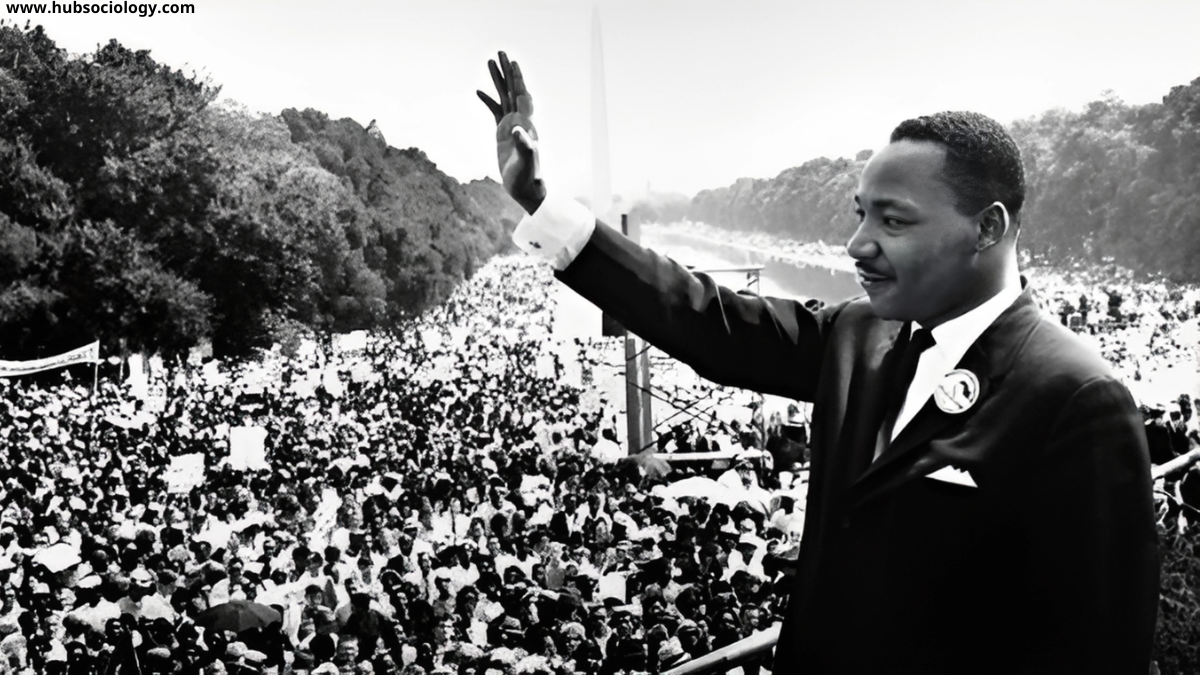Religion has always played a central role in shaping human societies, cultures, and worldviews. Beyond individual faith, it operates as a collective phenomenon that influences identity, morality, and social organization. Within sociology, religion is often examined not only as a belief system but also as a social institution that produces collective action, cohesion, and sometimes conflict. One of the most dynamic expressions of religion is seen in religious movements, which are organized efforts to promote, reform, or resist particular religious ideas and practices. These movements are not static; they evolve, interact with wider social structures, and respond to historical, cultural, and political contexts.
This article explores the sociological aspects of religious movements, their types, functions, causes, and consequences in society.

Understanding Religious Movements
A religious movement can be defined as a collective, organized effort to propagate or reform religious beliefs and practices, often emerging in response to perceived spiritual, moral, or social crises. Unlike mere religious traditions, movements are dynamic, carrying an element of change—either through the revival of old practices or the creation of new religious forms.
From a sociological standpoint, religious movements are seen as forms of social movements, rooted in human interaction and collective identity formation. Émile Durkheim emphasized that religion is essentially social in nature, while Max Weber linked religious movements with the broader processes of social change, such as the Protestant ethic’s role in the rise of capitalism.
Characteristics of Religious Movements
Sociologists identify some distinctive features of religious movements:
- Collective Orientation – They are not limited to individual piety but involve group activities, rituals, and shared goals.
- Charismatic Leadership – Many movements emerge around a charismatic leader who inspires devotion and loyalty, such as Prophet Muhammad in Islam or Guru Nanak in Sikhism.
- Sense of Crisis or Renewal – Movements often arise in times of social disintegration, moral decline, or political oppression.
- Boundary Formation – They distinguish themselves from the dominant religious or social order, often through new rituals, dress codes, or moral standards.
- Aim of Transformation – Whether spiritual, cultural, or political, their goal is to change individuals and societies.
Types of Religious Movements
Sociologists such as Max Weber, Ernst Troeltsch, and later scholars like Bryan Wilson have classified religious movements in various ways. Some major categories include:
1. Church, Sect, and Cult Movements
- Church-type movements are large, institutionalized, and integrated into society, such as the Roman Catholic Church.
- Sect movements arise in protest against established religions, stressing purity and a return to fundamentals (e.g., the Protestant Reformation, early Baptist sects).
- Cult movements are often new, small-scale, and centered on novel spiritual ideas or leaders, such as the Hare Krishna movement or New Age groups.
2. Reform Movements
These seek to renew or purify existing religions without breaking away completely. Examples include the Bhakti and Sufi movements in India, which aimed at spiritual democratization and moral reform.

3. Revivalist Movements
Focused on the return to original teachings and practices, revivalist movements often arise in response to modernization or Western influence. For instance, the Wahhabi movement in Islam or the Arya Samaj in Hinduism emphasized a return to scriptural purity.
4. Revolutionary or Millenarian Movements
These aim for radical transformation of society, often based on apocalyptic or utopian visions. Examples include the Taiping Rebellion in China or certain Christian millenarian sects expecting the “end times.”
5. New Religious Movements (NRMs)
Emerging largely in the 20th century, NRMs like Scientology or Falun Gong reflect contemporary spiritual needs, blending elements of traditional religions, science, and psychology. They respond to globalization, secularization, and cultural pluralism.
Causes of Religious Movements
Sociologists argue that religious movements are not merely theological phenomena but responses to structural and cultural conditions.
- Social Disintegration – In times of rapid social change, such as industrialization or colonialism, religious movements provide stability and meaning.
- Economic Inequality – Movements often arise among marginalized groups seeking justice, dignity, and hope, as seen in liberation theology in Latin America.
- Cultural Identity – They help preserve or revive ethnic and cultural traditions under threat, such as Native American religious revivals.
- Charismatic Leadership – The presence of influential leaders catalyzes collective mobilization.
- Globalization and Modernity – New religious movements emerge as responses to scientific rationalism, secularization, and cultural homogenization.
Functions of Religious Movements
From a sociological perspective, religious movements serve multiple roles in society:
- Identity Formation – They provide a sense of belonging and shared meaning to their members.
- Social Cohesion – Through rituals and moral codes, they strengthen community solidarity.
- Agents of Change – Many movements drive social reforms, such as the abolition of slavery or campaigns for social justice.
- Resistance to Oppression – They often serve as tools of resistance against colonialism, political domination, or cultural assimilation (e.g., Rastafarianism in Jamaica).
- Moral Regulation – By setting ethical standards, movements guide personal behavior and social norms.
Consequences of Religious Movements
Religious movements have far-reaching consequences, both positive and negative:
- Positive Consequences:
- Spread of education (e.g., missionary schools, reformist institutions).
- Empowerment of marginalized groups (Dalit movements in India linked with Buddhism).
- Cultural revival and preservation of traditions.
- Negative Consequences:
- Sectarianism and conflict between religious groups.
- Fundamentalism leading to intolerance or extremism.
- Social fragmentation when movements isolate members from wider society.
Thus, religious movements act as double-edged phenomena: they can inspire solidarity and reform, but they can also generate division and conflict.
Case Studies of Religious Movements
- Bhakti and Sufi Movements (India): Emphasized devotion, equality, and love of God, challenging caste hierarchies and orthodoxy.
- Protestant Reformation (Europe): Initiated by Martin Luther, it redefined Christianity and had profound political, cultural, and economic impacts.
- Civil Rights and Black Church Movements (USA): Religion played a central role in mobilizing African-Americans for justice and equality.
- Liberation Theology (Latin America): Combined Catholic teachings with social justice activism, empowering the poor against oppressive regimes.
- New Age Movement (Global): Reflects individualism, self-discovery, and spirituality beyond institutionalized religion, appealing to modern seekers.

Sociological Theories on Religious Movements
- Durkheim’s Functionalism: Religious movements create collective conscience and maintain social solidarity.
- Weber’s Theory of Charisma: Charismatic leaders play crucial roles in initiating and legitimizing religious change.
- Marxist Perspective: Religious movements can be seen as responses to exploitation—sometimes reinforcing status quo, other times challenging inequality.
- Symbolic Interactionism: Focuses on micro-level meanings, rituals, and symbols that sustain movements.
Conclusion
Religious movements, when studied sociologically, reveal the deep interconnection between faith and society. They are not isolated spiritual phenomena but collective responses to social conditions, shaped by historical, political, and cultural forces. While some movements consolidate traditions, others challenge or transform them. Their impact can be emancipatory, giving voice to marginalized communities, or divisive, fueling sectarian conflict.
In a rapidly globalizing world, religious movements continue to play a vital role, reflecting both the enduring power of faith and the dynamic nature of social change. For sociologists, they remain a key arena for understanding how religion both stabilizes and transforms societies.
Do you like this this Article ? You Can follow as on :-
Facebook – https://www.facebook.com/hubsociology
Whatsapp Channel – https://whatsapp.com/channel/0029Vb6D8vGKWEKpJpu5QP0O
Topic-related questions
5 Marks Questions
- Define religious movements in a sociological sense.
- Mention two characteristics of religious movements.
- Differentiate between revivalist and reformist movements.
- Give two examples of new religious movements (NRMs).
- Explain the role of charismatic leadership in religious movements.
10 Marks Questions
- Discuss the main causes of religious-movements in society.
- Examine the functions of religious-movements with suitable examples.
- Compare and contrast sects and cults as forms of religious movements.
- Analyze the sociological significance of the Bhakti and Sufi movements in India.
- Explain the contribution of Max Weber’s theory of charisma to the study of religious-movements.
15 Marks Questions
- Critically analyze the types of religious-movements and their relevance in contemporary society.
- Discuss the positive and negative consequences of religious-movements with examples.
- Evaluate the role of religious-movements as agents of social change with reference to historical case studies.
- Examine the sociological theories of Durkheim, Weber, and Marx in relation to religious-movements.
- “Religious movements are both a source of social cohesion and social conflict.” Discuss with examples.

2 thoughts on “Religious Movements in Sociological Aspect”